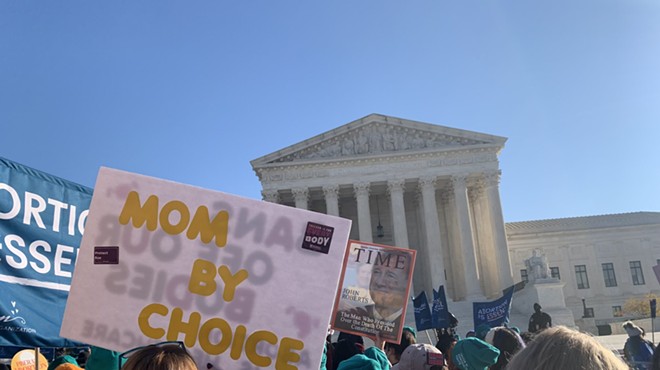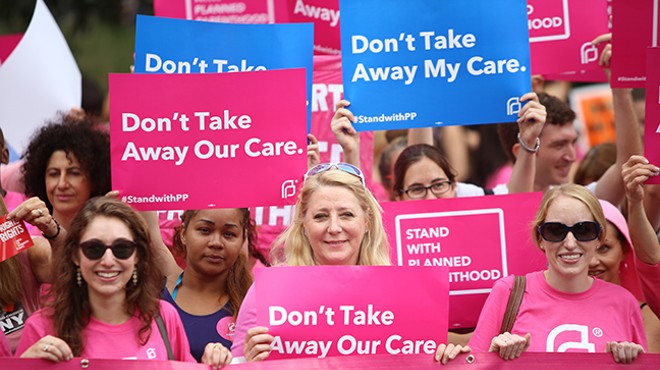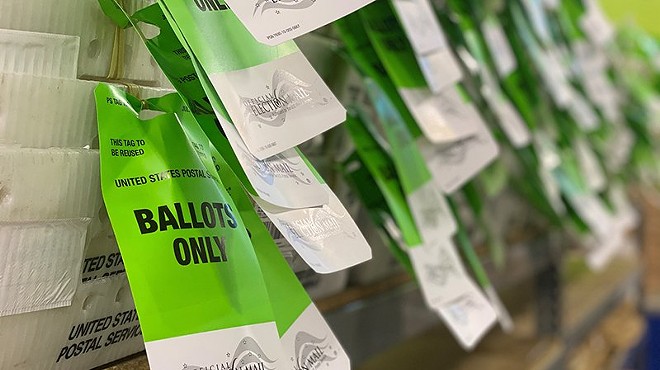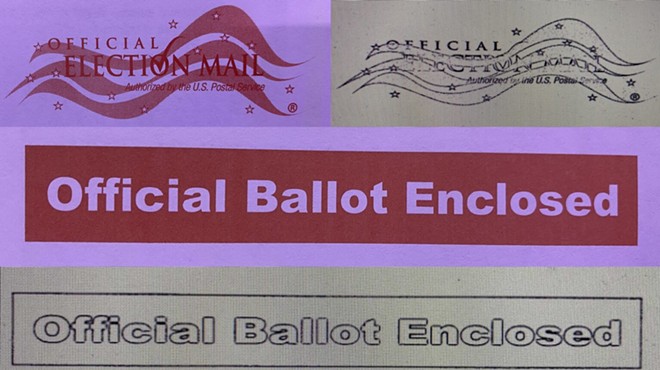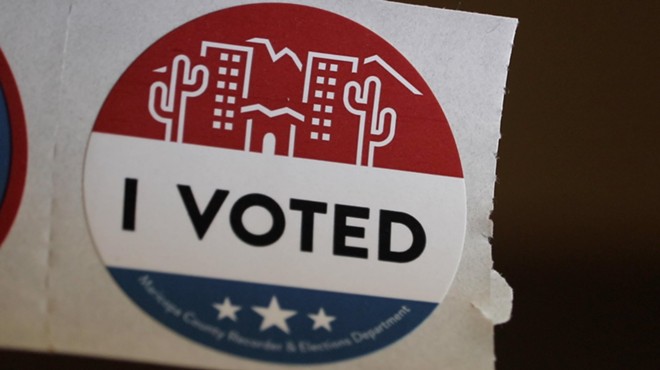Wednesday, February 26, 2014
Mayor Jonathan Rothschild's State of the City Address
Ladies and gentlemen, welcome to the 2014 State of the City Address. I’d like to thank the Tucson Metropolitan Chamber of Commerce and the Tucson Convention Center for hosting this year’s event. Thanks especially to the Chamber for sharing proceeds with three local nonprofits that are helping with several of my initiatives: 51 Homes Vets, Make Way for Books and Tucson Clean & Beautiful.
Each of these charities works in a different area — ending veteran homelessness, increasing childhood literacy and restoring Tucson’s tree canopy — yet all share the same model for success: bringing together individuals, businesses, government and nonprofits to address community needs.
In June, I accepted the President’s challenge to end veteran homelessness in Tucson by December 31, 2015 — which means placing 1,650 homeless veterans in permanent housing. That’s a goal we’re on track to meet. Working with 18 partner agencies, including the City’s Housing Department, we’ve already housed close to 500 formerly homeless veterans.
In August, in partnership with the Arizona Daily Star, we launched a volunteer recruitment drive to double the number of reading coaches in Reading Seed, a program that pairs struggling readers in grades K through 3 with trained volunteers. Too many of our children don’t read at grade level by 3rd grade, a critical milestone that predicts future success in school. We met our goal, adding more than 600 volunteers, who will help more than 1,200 students, all, or almost all, in Title 1 schools. 1,200 lives changed — 1,800 if you count the volunteers, who often find their lives changed, too.
In October, in partnership with Tucson Clean & Beautiful, TEP, Long Realty and others, we rolled out our 10,000 Trees Campaign, encouraging individuals, business and community groups to plant desert-adapted trees, especially in neighborhoods that lack shade. That’s another goal we’re on track to meet. To date, we’ve planted more than 4,000 trees.
These are basic needs our community is tackling together, through public-private partnerships:
housing, literacy and the environment.
Of course, City government works to meet basic needs every day — water, transportation, sanitation, public safety, parks, courts, building safety and others. There’s renewed emphasis on the basics — on what the City does best, and what’s best left to others.
The basics matter. Like moving forward on long-delayed road restoration projects, as we’ve begun to do with passage of the $100 million road bond — on time and on budget, I might add. Like building sidewalks, cleaning medians and removing graffiti. The basics build pride in our community. Doing the basics well helps attract the capital we need to build our community.
I just gave some examples of public-private partnerships with the nonprofit sector. These partnerships can work equally well with the for-profit sector.
Downtown Redevelopment
For example, downtown looks quite different than it did two years ago. It looks quite different than it has for the last 40 years — a veritable, Biblical wandering in the desert. How did this happen? Ending the Rio Nuevo dispute, building the streetcar line and adopting a tax incentive
— a public-private partnership — that helps developers yet guarantees a greater return to
taxpayers — all this has visionary developers and business owners investing in downtown.
Over the next year, you’ll see close to $9 million of strategic improvements made to the Tucson Convention Center. You’ll see young entrepreneurs move their businesses and dreams downtown — at CoLab or Connect Coworking. You’ll see artists and crafters mixing with coders and hackers at places like Maker House and Xerocraft. You’ll see ground broken on a new, modern, urban hotel. And, as people continue to move downtown, maybe — just maybe — you’ll see that cornerstone of urban neighborhoods, a grocery store.
I don’t highlight downtown redevelopment just because it’s a success we can all see. I highlight it because it’s a working example of what our city can be.
I want to review some of what we accomplished last year, working together. Too often, we underestimate our city’s capabilities.
I also want to preview what lies ahead. Tucson is a city in transition.
T h e Five T ’s
Like everyone else who grew up here, I learned about the Five C’s: cattle, citrus, copper, cotton
and climate.
But today, there aren’t many cattle or cotton fields inside city limits. And while I grew up in a place called Orange Grove Park, that grove gave way to a housing development more than 50 years ago.
Today, Tucson’s economy is based on Five T’s — technology, trade, transportation, tourism and teaching.
The Five T’s build on our strengths — who we are and who we can become.
So let’s talk about how Tucson has led and continues to lead in these areas, and the work that remains to be done.
Technology
Technology. Tucson has a major research university in the University of Arizona. Over the years, discoveries made there have spun off local tech companies. To cite just a few: Breault Research Organization, whose software helped capture the first clear images of far-off galaxies; Ventana, now part of Roche, whose technology revolutionized tissue biopsy testing; and Knowledge Computing Company, now part of IBM, whose neural network, COPLINK, helped identify the Beltway snipers. The City of Tucson, by the way, provided early funding for COPLINK, and the Tucson Police Department helped in its development.
These tech companies are not just higher-wage companies, they’re homegrown companies, and
that’s important, because homegrown companies tend to stay local, spend locally, form
industry clusters and export — all things that bring economic health to a region.
Tucson has many such success stories, but we need more. That’s why my office identified five areas in which to focus our efforts: entrepreneurship, aerospace and defense, healthcare, solar and water.
Entrepreneurship
Our University partners are on the same page — with our new University of Arizona President, Dr. Ann Weaver Hart, and new tech transfer specialists at Tech Launch Arizona and the Office of Technology Transfer. The City of Tucson has invested as well, hiring a staff person to help Tech Launch Arizona connect local entrepreneurs with the resources they need to bring products to market.
Efforts like this pay off. Tucson has the highest concentration of startups of any city its size in the United States. And last year, Entrepreneur Magazine named Tucson as one of the top five cities for entrepreneurs.
So while we work to strengthen our startup pipeline, what about existing companies? Aerospace and Defense
In our largest industry cluster, aerospace and defense, we’ll work with our prime contractors, in conjunction with the Arizona Technology Council, to encourage procurement from local subcontractors and suppliers. At the same time, we’ll work with local subs to assure they can provide what our primes require. Increased local procurement would give a huge boost to our economy, and the more suppliers we can add to our supply chain, the more attractive we become to this — or any — industry cluster.
The City is working with the Tucson Airport Authority, Raytheon and the Arizona Air National Guard to enhance the operations of each. The airport sits predominantly on land leased by the City. We’re working with the Airport Authority to transform that land into a logistics and manufacturing hub.
With respect to the military, I cannot be clearer than this: we will support the missions required to keep D-M and the ANG in our community. We will work to assure that Tucson remains an important part of our nation’s defense strategy. We value our military’s contribution to our country and to this community.
Healthcare
Tucson has all the ingredients to become a healthcare destination, with our University’s medical research, Cancer Center, Center for Integrative Medicine and our many top healthcare providers. Historically, many came here seeking better health. With our healthcare systems
collaborating for the betterment of all, we can become a city known nationally and internationally as a place to come get healthy and live a healthy lifestyle. If we promote and build on what we have, using Visit Tucson’s resources, we can take what’s already a center of excellence and use it to improve the health of our economy, as well as the health of our people.
Solar
Another industry to focus on is solar. Tucson International Airport recently completed Phase One of a solar installation that provides about a third of the terminal’s power needs. This month, Davis-Monthan Air Force Base completed the largest solar installation in the Department of Defense, which they expect will save about a half million dollars a year. Tucson Unified School District is installing solar at 43 schools, with each installation providing about
80% of the school’s power needs. And my staff has been doing initial work looking into the feasibility of putting solar farms at closed city landfills — another win-win. If you support our construction industry, our manufacturing sector, our ability to lead in technology, you should support solar.
Water
Our newest tech industry cluster may be water — joining aerospace and defense, biomedical, healthcare, information technology, optics, solar and more.
Last year, Tucson Water recharged its millionth acre-foot of Colorado River water. This year, Tucson Water finished construction of its AOP Water Treatment Facility, and continues to implement recommendations from IBM’s Smarter Cities Challenge Grant. We’re looking to maximize this expertise, as well as that of University of Arizona and industry partners, and create a new industry cluster in Tucson: water delivery technology and services. With population growth and climate change, meeting the demand for water will be a global concern for the remainder of this century and beyond.
Technology is always in transition, and for businesses and entrepreneurs, that means there’s
always opportunity.
That opportunity can and must extend to our young people. We’re working with our business community, universities, junior college, technical schools and school districts to match skills in supply with skills in demand, identify gaps in training, and develop our modern workforce. We will develop internship programs to move our young people from school place to workplace, keeping our children here, because Tucson is where they can find the jobs they seek.
The City of Tucson continues to provide special incentives to higher-wage companies through its primary jobs incentive. This ordinance, passed by the City Council, provides waivers and reduced development fees to companies that make a substantial capital investment and create
25 new jobs that pay at least 125% of the median wage for our region. Last year, the program was offered to American Tire, BE Aerospace, Mister Car Wash and Modular Mining Systems. And we’re looking to do more, amending the ordinance so retailers and more manufacturers can apply.
Trade
Trade. Initially, my work in Mexico was simply to be there, to show friendship and repair damage done by SB 1070 and its ilk. I quickly learned that our losses from these offensive measures were more than in reputation and relationships. Our losses were economic. How do you ignore half the people in an economic region and expect to prosper? How do you turn your back on one of the world’s emerging economies, particularly when many of their leaders were educated at the University of Arizona, have family who live here, own property in Tucson and want to invest here? You don’t.
That’s why the City of Tucson was one of the original sponsoring partners of the new Arizona- Sonora Business Guide, published by the Arizona Daily Star. More than 1,600 companies signed up to be included, on both sides of the border. Many companies manufacturing elsewhere don’t know what our regional capabilities are. Now, they will. And, the more Southern Arizona and Northern Mexico businesses know about and tap into each other’s strengths, the more prosperous our region becomes.
We know that if we want to bring jobs to Tucson, we have to do more than wait for the phone to ring. That’s why the City of Tucson joined with Visit Tucson to use our tourism offices in Hermosillo and Ciudad Obregón as portals for economic development, as well as tourism. People in these cities will have a direct line to the City’s Economic Development Specialist for International Trade. I’m sure I don’t have to explain the value of taking this step, or the next one — securing one or more partners so that Tucson has a similar presence in Mexico City.
Our efforts are paying off. Just yesterday, a Mexican company the City’s Economic Initiatives Office had been working with — Zucarmex, a sugar producer — signed a lease with the Port of Tucson, bringing up to 50 jobs to Tucson over the next few years. They chose Tucson for our competitive advantage in logistics, which goes to show the importance of our inland port. Congratulations to city staff and the Port of Tucson, and welcome Zucarmex.
We will do more. Perhaps as early as this summer, we will have nonstop flights from Tucson to Hermosillo, a hub to the rest of Mexico. We will provide export-import assistance to local businesses through partnerships with the Arizona Commerce Authority, the United States Department of Commerce and the Small Business Administration.
And in May, my office will host an International Development Conference in Tucson, welcoming elected officials, business people and academics from around Mexico. I assure you, they are excited to learn about opportunities here. Everyone in this room is invited to come, get to know your neighbors and learn about opportunities for business.
Southern Arizona and Northern Mexico is a region in transition. Transportation
Transportation. All this depends on improvements to existing infrastructure. I’ve had the honor of meeting with the current Secretary and the last two Secretaries of the U.S. Department of Transportation, and they agree: we need to improve existing infrastructure to facilitate trade. We need to build out I-10, I-19 and SR-189, that spur that connects the Mariposa Port of Entry to I-19. When you’re on I-10 and you go from 6 lanes to 4 lanes to 6 lanes to 4 lanes, you understand the need to immediately complete expansion to 6 lanes between Tucson and Phoenix, and the capacity we’ll have by doing so. These are near-term strategic investments that we can accomplish now, with the help of our federal and state partners.
Tourism
Two more T’s, tourism and teaching, are also paths to prosperity. Their importance lies in this fundamental truth: Businesses move where their executives and management want to live.
I recently had the pleasure of visiting Oklahoma City at the request of the Tucson Metropolitan Chamber of Commerce. Now, Oklahoma has oil and, unlike Arizona, they tax extraction of their natural resources. But, like any economy reliant on an industry subject to boom and bust, twenty years ago, Oklahoma City was struggling. Young people were leaving in droves. They weren’t attracting new business. Then, they had an opportunity to compete for a United Airlines maintenance facility. It was a transformational opportunity; one that promised thousands of jobs. The mayor convinced the citizens of Oklahoma City to vote for a one percent sales tax increase to give United Airlines a $125 million gift if they would come to their city. Despite this, United chose Indianapolis. When asked why, United’s CEO said they couldn’t see their people living in Oklahoma City. This was the moment that turned Oklahoma City. Business leadership determined they had to invest in their city, in projects that made their city livable not only for others, but for themselves. They embarked on a series of public investment projects that have transformed Oklahoma City into a city people want to visit and live in.
We, too, must focus on building a city people want to visit and live in. We all know people who’ve moved here, and brought their businesses here, after a visit on business or vacation.
And even if businesses don’t move here (and I’m convinced they will) we’ll have a city we love and take pride in. That’s what they learned in Oklahoma City.
We continue to work with Visit Tucson to promote festivals and events — the Gem Show, rodeo, Tour de Tucson, Tucson Festival of Books, All Souls Procession and music, film and arts festivals. And we will work with Visit Tucson to bring more amateur and youth sports events to Tucson. We all mourn the loss of spring training, but when we look at the unsustainable cost of supporting Major League Baseball’s exhibition season, we know that amateur and youth sports can be more profitable for our community, bringing teams and their families to our facilities, hotels, restaurants and stores year-round.
Teaching
Teaching may be the fundamental T. Businesses looking to relocate here invariably ask about the quality of our schools. They want a job-ready workforce. They want a good education for their employees’ children.
Because education is so important, because our children are so important, I encourage each of you to help. Contact Literacy Connects or Make Way for Books. Contribute to Tucson Values Teachers or the Educational Enrichment Foundation. Contact any of our local school districts. Mentor a child — one learning to read or an older child who needs a little extra support to get a high school diploma.
The City of Tucson will do its part. We will expedite the rezoning of closed school sites, helping our school districts’ bottom line and remaking these sites once again into community assets that attract young families to our urban core.
I’ve given you ways each of you can help, but I’m asking all of you to do this: Demand that the state adequately fund our public school system. Bring us from dead last — dead last — Arizona is
51 out of 50 states plus the District of Columbia — in per-student K-12 public education funding, to at least a median level of investment in our children’s futures.
Starving our public schools of needed funds is as anti-business as SB 1070 — or the most recent outrage, SB 1062. These policy decisions harm business. For this reason, I’m asking the business community: Lead the way. Demand that K-12 public education funding become a top priority in our state. I’m not sure who some of the folks in our legislature listen to, but I know business interests still have a voice at the capital. Use it to demand adequate, competitive funding of our public schools.
City Government
Tucson is in transition and so is City government. Our City Manager, Richard Miranda, is completing a review of each department’s operations — part of that emphasis on the basics, on determining what the City does best, and what’s best left to others. The focus is on putting more people on the street, in front-line services; on realigning resources to provide the basic services the community requires.
City staff work diligently to find efficiencies while preserving services, but this has been going on for years. The simple fact of the matter is this: Tucson does not have an expense problem, we have a revenue problem. We have a federal government that, each year, reduces funds to cities. We have a state government that will not provide additional revenues, and when looking to cut taxes, looks to those funds that go directly to cities. The strategy is obvious. If you don’t believe government can do a good job providing services, stop funding it, thereby proving your point. No philosophy could be more destructive.
And so, the administration that provides police, fire, water, parks, transit, road repair and environmental services to much of the region is left to make difficult choices.
Making these choices will require courage — courage to do what’s best for our city as a whole, even when it may not be what vocal constituencies want. If we expect support from our city and our region — support we need — that’s the least we can do.
City Administration, Mayor and Council are on this course. We are making difficult choices.
We completed a long-overdue Comprehensive Operational Analysis of our transit system, adopting recommendations that will save costs without affecting service. After gaining what efficiencies we could, we took the next step and put out for public discussion — as required by law — proposals for a modest fare increase.
We put out a request for qualifications to redevelop the Ronstadt Transit Center as an integrated mixed-use development/transit center.
We transferred City golf operations to private management in an effort to improve service, increase revenues and save money. We will look at the same option with Convention Center operations.
We’re monitoring carefully our civil service employees’ pension plan to assure solvency. Our public safety employees are in a state-controlled plan. Where we have control, we will make the tough choices required to assure that all our employees have a solid retirement plan and the City can continue to provide needed services.
We will continue to tighten our belts. But without true partnership with our regional governments and our business community, we will all struggle to succeed.
So how does the City solve its revenue problem? Unlike the County, the City has little control over its revenues, which are overwhelmingly based on sales tax. Our city residents’ primary property tax is collected and allocated by our County administration, and not by the City. Add to this the fact that our City Charter limits our governing body’s ability to create additional general fund revenue and you see the importance of helping our business community succeed.
You’ve been given three pamphlets — on the City’s business incentives and assistance programs, Planning and Development Services programs and the advantages of annexation. Take them with you. Learn how the City can help your business.
Economic growth alone, however, is not enough. We must also look at other ways to increase revenue and infrastructure investment.
Such as: formulating a long-overdue regional bond package. A bond package that, like those in Oklahoma City, improves our quality of life and attracts new businesses — repairing roads and sidewalks, restoring parks and public facilities. Such as: going to work to reauthorize funding for the Regional Transportation Authority, directing more funds to transit, road repair and alternative modes of transportation.
Such as: reviving the Houghton Area Master Plan — a part of the city where growth makes sense.
Such as: a community-wide effort to explain the fiscal sense in incorporation and annexation, so our tax dollars that now go to Maricopa County can come back and provide services in our region.
Any and all of these investments yield great benefits for our region as a whole. Businesses are attracted to and stay in communities where infrastructure is supported.
Conclusion
This is a region in transition. At its heart is the City of Tucson. And whether everyone likes it or not, the success of a region depends on the success — and image — of its largest city. Nationally, metro areas are home to 84% of the population, 86% of the jobs and 91% of real GDP. It’s one thing to advocate for improvement, but it’s quite another to attack your fundamental asset, your city, the city others identify as the region.
This was brought home to me when I attended a presentation on business in Israel. Now, Israel has some real challenges. There’s a lot to complain about. But I heard no complaints from the Israeli businessmen. Instead, they talked about their country’s strengths — what a great place it was to do business.
We have no problem finding problems. What doesn’t get as much attention are Tucson’s strengths. That’s one reason the Five T’s are helpful. They force us to look at our strengths — to focus on building up, rather than tearing down.
City of Tucson staff work every day to make this city successful. They do a good job, with ever- shrinking resources, but that rarely gets noticed. And that’s frustrating. But helping to restore pride in our city — launching new initiatives and shining a light on some of the good work Tucsonans do every day — that’s why I ran for office and that’s why, despite the frustrations, I continue to love this job.
Two years ago, I came before you and spoke of making Tucson work. We’ve made great strides. Last year, I spoke of how we do more together than alone. Today, you’ve heard specific
examples of public-private partnerships. Whether it’s ending veteran homelessness, increasing childhood literacy, restoring Tucson’s tree canopy or creating a vibrant downtown, public- private partnerships are a model that works.
I want to close by sharing with you a constituent email. After a complaint about potholes, this gentleman wrote that he’d joined Walk 100 Miles with the Mayor, now called Tucson Moves a Million Miles — a program I launched as part of my Healthy Tucson initiative. He wrote that the ability to log his walks using the tool on the website keeps him motivated. Over a year, he’s walked 600 miles, lost 40 pounds and feels like a younger man. His email ends with, “I challenge all to get involved.”
That’s really what I’m doing up here today: challenging all to get involved.
Change is a given. It happens all the time. Constructive change happens when people come together and work toward common goals. The people in this city — the people in this region — have many common goals.
Tucson will transition and transcend with the help of the people in this city, with the help of the people in this room.
As always, I want to thank our City Manager and City staff for their dedication and professionalism. I want to thank my colleagues on the City Council for their service and support. And I want to thank all of you, and the people of Tucson, for the work you do every day to make this a better place, and for allowing me the great privilege of serving as your mayor.
Thank you.


